When traveling to Vietnam, you should know about the country’s currency system to make a purchase and avoid counterfeit money or joss paper. The official currency of Vietnam is the Vietnamese dong (VND) and the currency symbol is ₫. The first thing you need to know is the exchange rate when you start using Vietnamese Dong. Please note that these values below are rounded for convenience and are subject to change with time. So check out exchange rate again (click here) as you are on the point of having some exchanged.
The table below displays conversion rates for various currencies such as the US Dollar, New Zealand Dollar, Australian Dollar, Indian Rupee, etc., to Vietnamese Dong.
| Currency | Exchange Rate (VND) | Value for 100 Units |
|---|---|---|
| USD | 25,573 | 100 USD ~ 2,557,338 VND |
| EUR | 27,638 | 100 EUR ~ 2,763,804 VND |
| AUD | 16,114 | 100 AUD ~ 1,611,412 VND |
| INR | 298 | 100 INR ~ 29,849 VND |
| NZD | 14,684 | 100 NZD ~ 1,468,402 VND |
| Updated: 2025-03-28 01:52:11 | ||
The Vietnamese dong is mainly used in the form of banknotes, which are made of paper or polymer, and have denominations ranging from 1,000 to 500,000 dong. The Vietnamese dong can be exchanged for other currencies at banks, hotels, or authorized exchange bureaus. The exchange rate of the Vietnamese dong varies depending on the market conditions, but as of March 2025, one US dollar was equal to 25,573 dong.
What does Vietnamese money look like?
Presently, Vietnam's currency is circulated in two forms: Polymer notes with denominations of 500,000 VND, 200,000 VND, 100,000 VND, 50,000 VND, 20,000 VND, and 10,000 VND, and Paper notes with denominations of 5,000 VND, 2,000 VND, 1,000 VND, 500 VND, and 200 VND. However, as of March 2025, denominations of 200 VND and 500 VND are nearly nonexistent. The 1,000 VND note is seldom used due to its impracticality; it can hardly cover the cost of essential items or food.
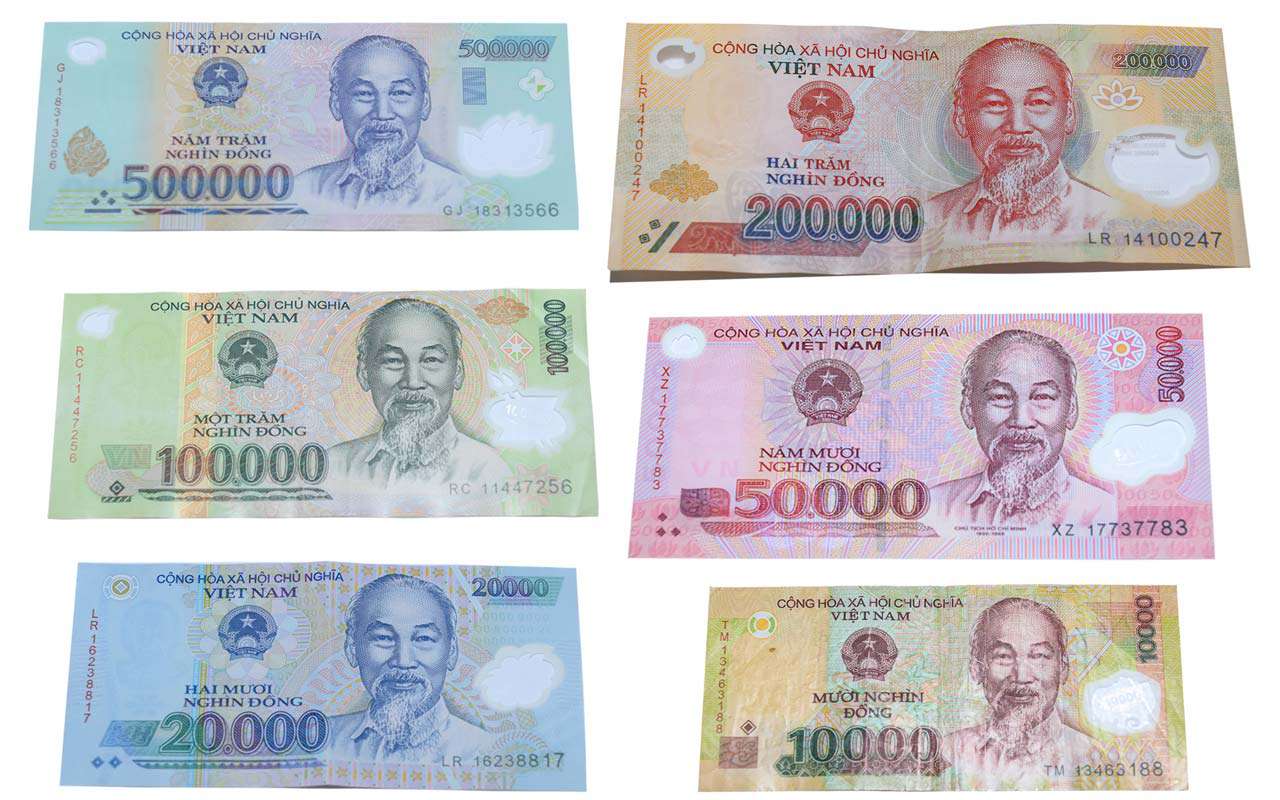
Nowadays, Vietnamese people use 500,000 – 200,000 – 100,000 – 50,000 – 20,000 – 10,000 VND notes (the most major and valuable notes) which are made of long-lasting polymer. These notes are much harder to wear and tear, and damage by water. But they can easily stick together and they are also slippery, so make sure you flick or peel the money carefully before paying for a purchase.
The 500,000 VND is the biggest note in term of size and value in Vietnam and has a cyan blue color to it. This note has a picture of Ho Chi Minh’s birthplace in Nghe An province. You should be careful when using 500,000 VND note and 20,000 VND notes because the colors of those are similar to each other, only different when it comes to the shade.
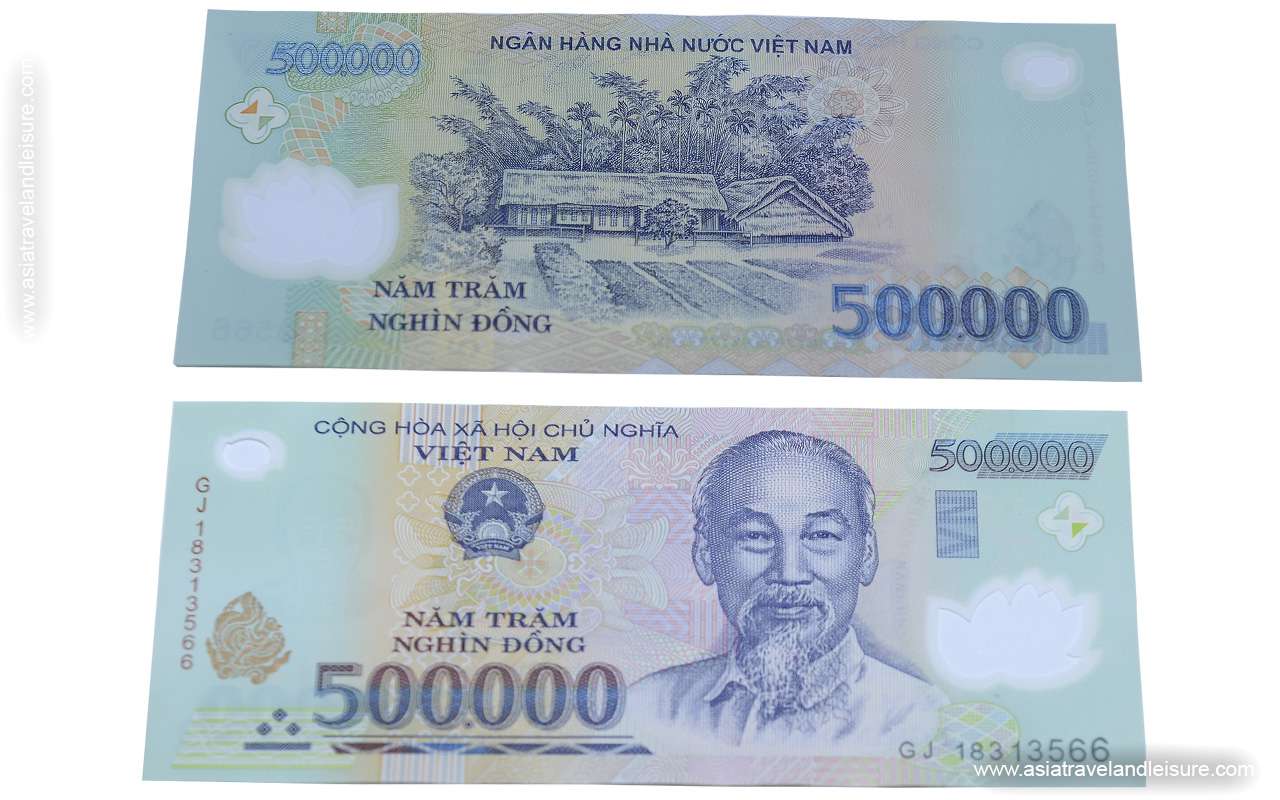
500,000 VND ≈ 22 USD
The color of 200,000 VND is brownish red. It is a little similar to the 10,000 VND note so you should pay attention to the number and the size of each note. On the back is a picture of Ha Long Bay, a UNESCO World Heritage Site.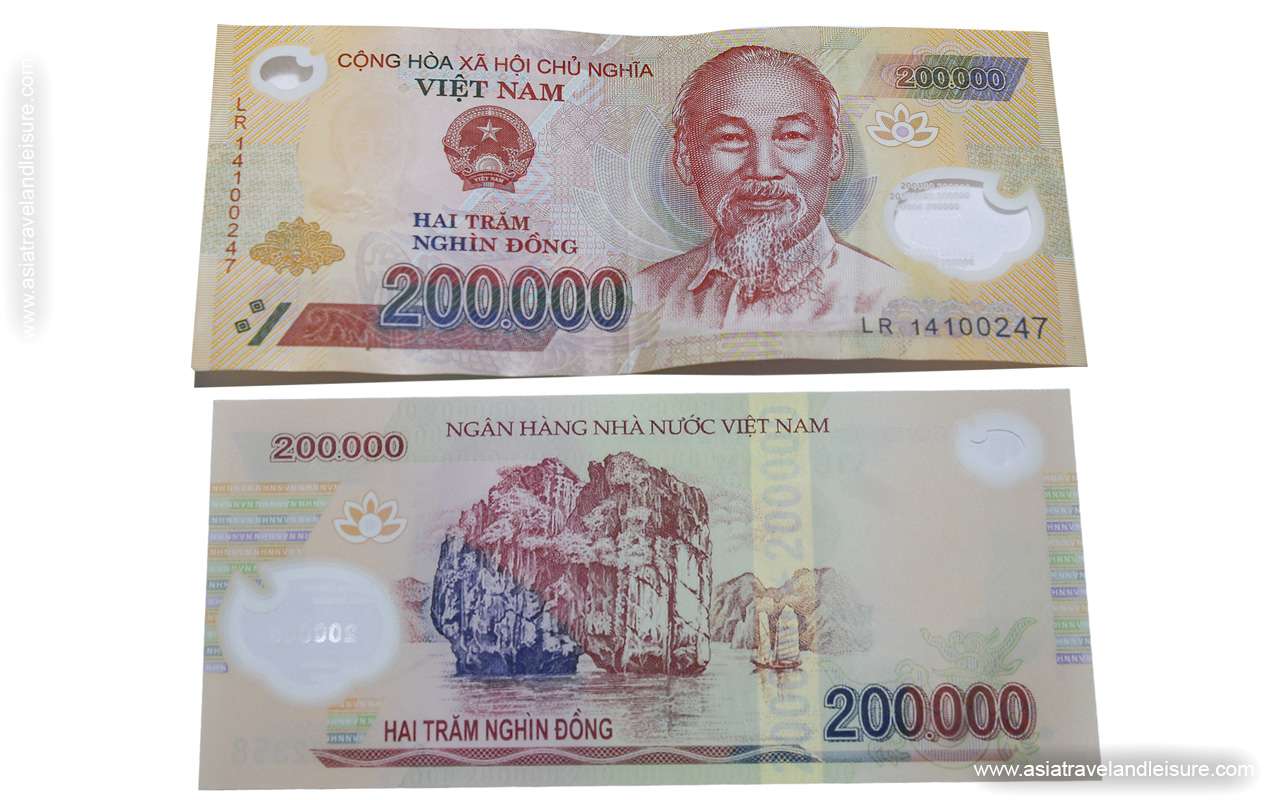
200,000 VND ≈ 9 USD
The 100,000 VND note is in yellowish green. The picture on the back is of the Temple of Literature in Hanoi, one of the most beautiful structures in Vietnam.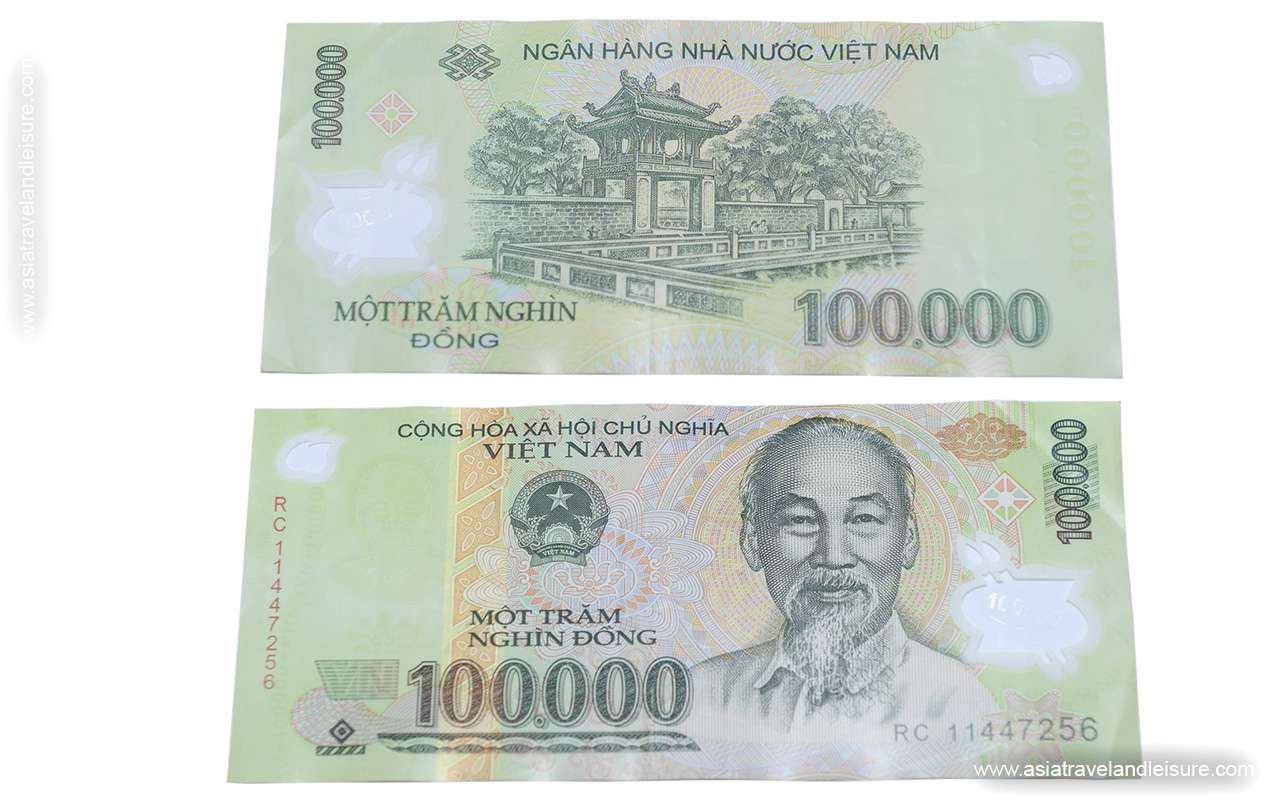
100,000 VND ≈ 4.4 USD
It is very easy to point out the 50,000 VND note because of its unique purple-pink color. This note has a picture of Phu Van Lau, a pavilion located on the main axis of the Imperial Citadel in Hue on one side.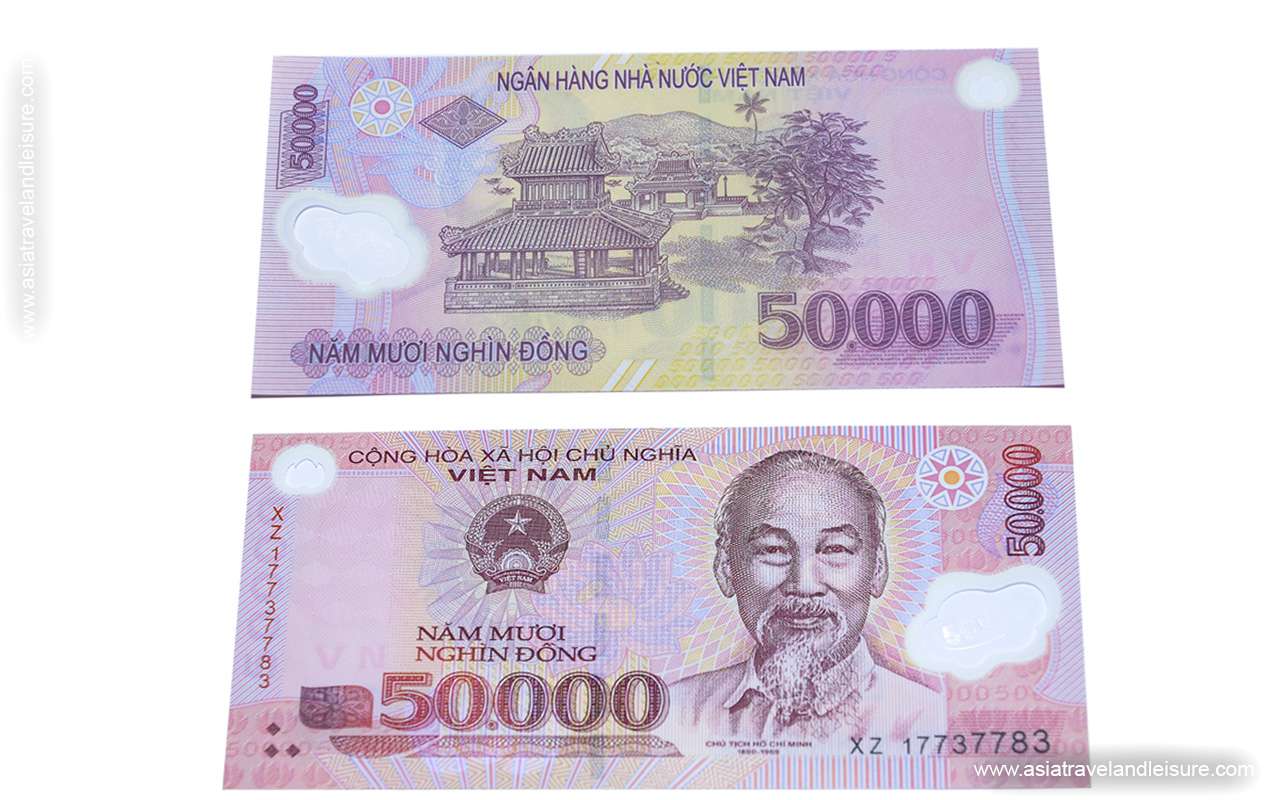
50,000 VND ≈ 2.2 USD
The 20,000 VND is blue and has a picture of the Japanese Covered Bridge of Hoi An on one side which will help you distinguish it from the 500,000 VND note.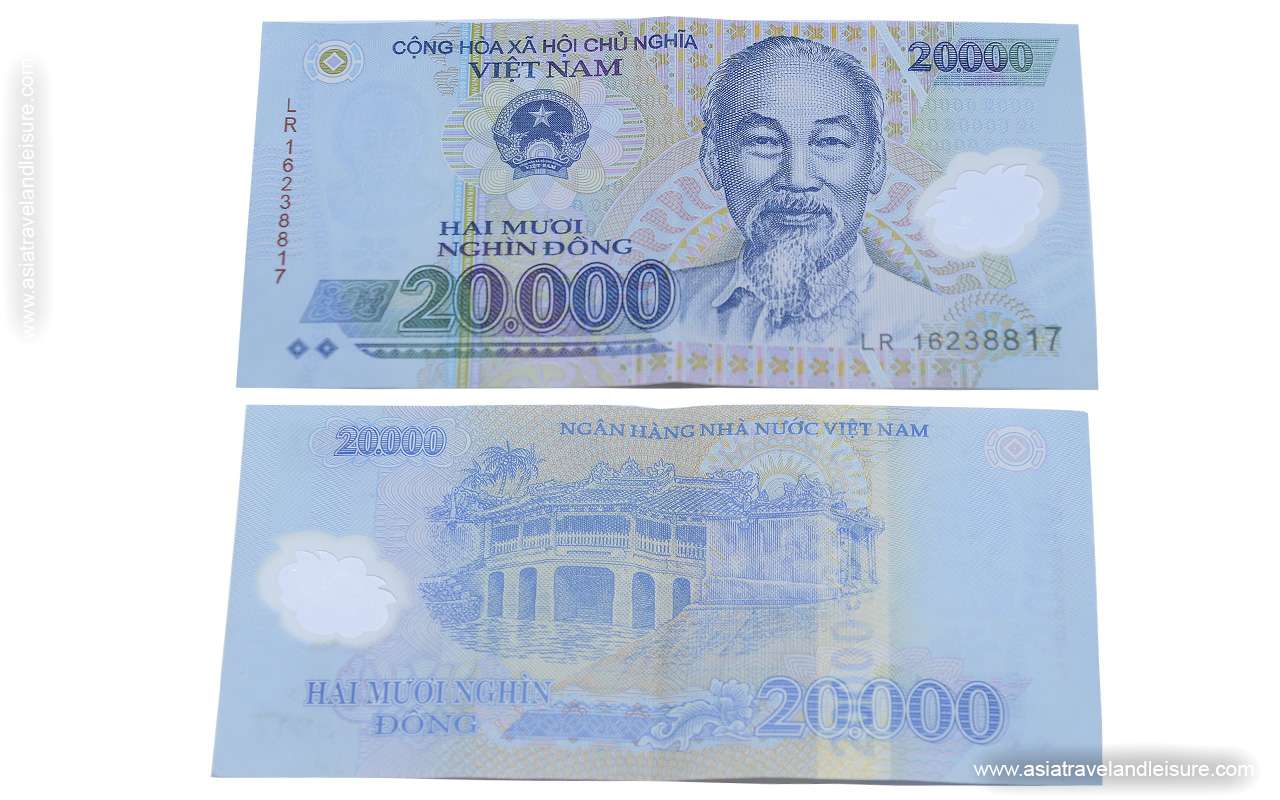
20,000 ≈ 0.90 USD (~ 99 Cent)
A 10,000 VND banknote is brownish yellow and has the smallest value of all polymer notes. The picture on the back depicts oil production on the seashore of Vietnam.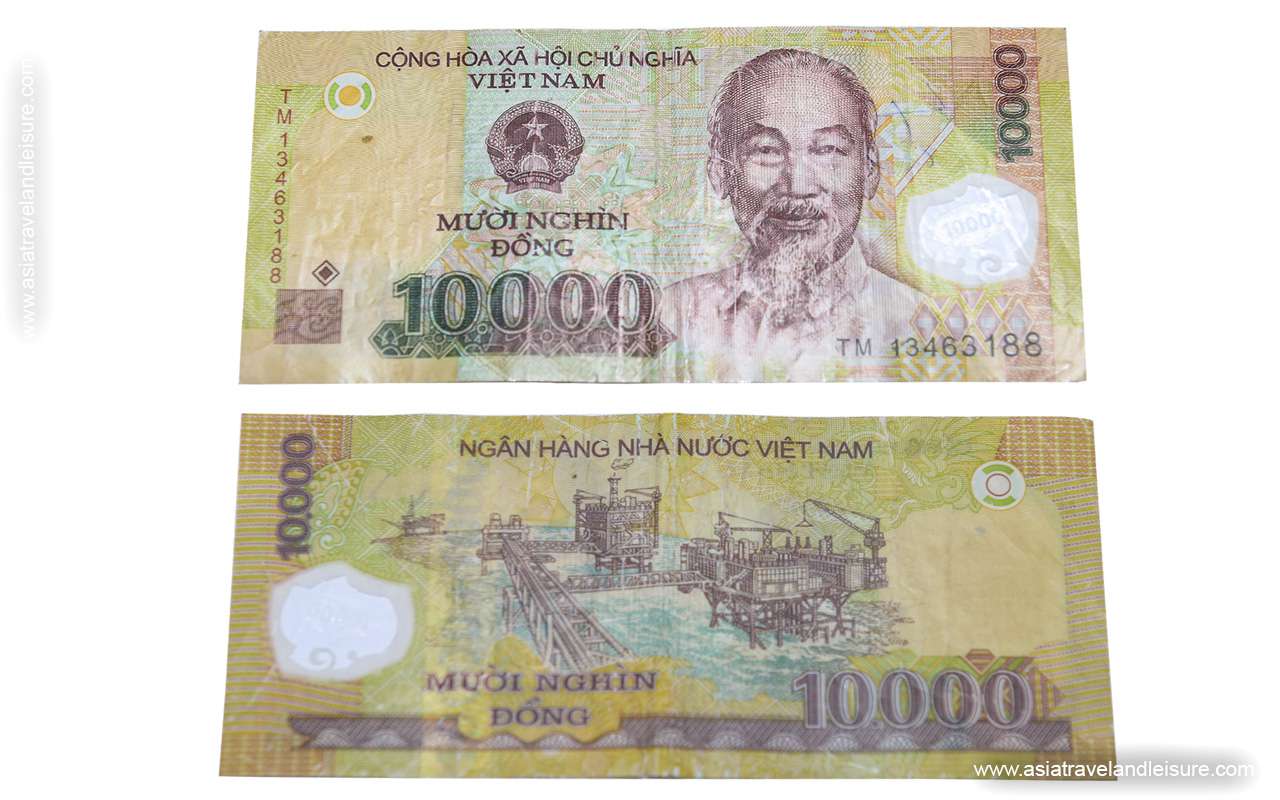
10,000 ≈ 0.44 USD ( ~ 44 Cent)
And there are also 5,000 VND - 2,000 VND - 1,000 VND - 500 VND cotton notes. It is better to keep some small notes when you use public toilets, which will charge you 2,000 VND/time/person.
Tips:
- Don’t keep a lot of big notes in your wallet
- Hand small VND notes for small payments or for use in off the beaten track
- Double check and count the zeros before you hand the cash in and after you receive your change
- Practice using VND notes before arriving Vietnam
- Use credit card for big purchase to avoid the mistake
Is $100 US dollar a lot of money in Vietnam?
What is the average monthly salary in Hanoi, Vietnam?
Is it better to exchange money in Vietnam or before traveling?
Where can I exchange currency in Vietnam?
How much cash should I bring to Vietnam?
Are credit cards widely accepted in Vietnam?
The exchange rates featured in this article are automatically sourced from an internet database. Please be advised that exchange rates and figures may fluctuate over time, and their real-time accuracy cannot be guaranteed. For the most precise and up-to-date information, we recommend checking the official website of the Vietnam Bank for Foreign Trade, where you can verify the exchange rates of the Vietnamese Dong against various commonly used currencies. We assume no responsibility for any potential discrepancies that may arise due to variations in the data presented in this article.
Updated on 2023-11-24 01:48:05.
Other FAQs
- How much is a tourist visa to Vietnam from Australia?
- Halong Bay Tours - How to plan your trip?
- How long can I stay in Vietnam on a tourist visa?
- Vietnam Vacations from Spain
- Vietnam Tourist Season: When to Go and What to Expect
- How long does it take to get a visa to visit Vietnam?
- THE 38 BEST Things to Do in Vietnam
- Do Spanish citizens need a visa to Vietnam?
- Vietnam Tour Packages from Finland
- Do I need a visa to visit Vietnam from UK?









Questions & Answers
Thank you for your question. Of course, we can help you to obtain a visa to Vietnam by email. It normally takes about 3 working days to proceed. One of our travel consultants will email you more details shortly.
Best regards,
Vietnam Tour